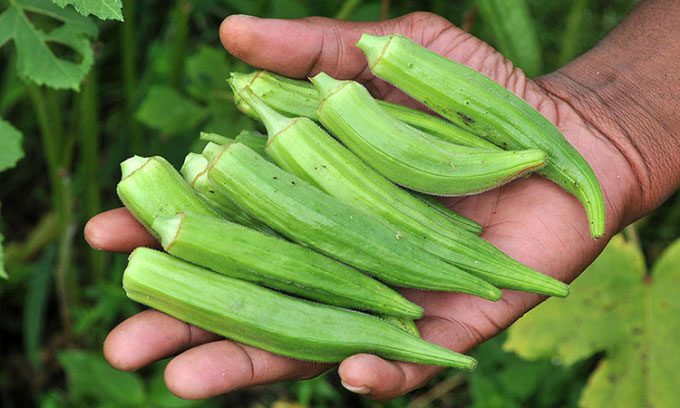Compounds extracted from okra and several soft-stemmed plants can remove dangerous microplastics from water sources, scientists say.
A new study presented at the American Chemical Society’s spring meeting on March 22 offers an alternative to synthetic chemicals that may pose health risks currently used in wastewater treatment plants.

Okra slime can absorb microplastics in water. (Photo: Healthy Life).
“To continue removing microplastics or any other materials, we should use natural, non-toxic materials,” said lead researcher Rajani Srinivasan from Tarleton State University.
Okra is used as a thickening agent in many dishes, such as Gumbo, a stew from Louisiana. It is also a staple in South Asian cuisine, where it is known as bhindi.
Srinivasan’s previous research examined how okra slime and several other plants could remove contaminants from fiber fabrics in water and even microorganisms, and she wanted to see if this could similarly apply to microplastics.
Microplastics—pieces of plastic smaller than or equal to 5 mm—have been shown to harm fish in various ways, from disrupting their reproductive systems to stunted growth and liver damage.
It is estimated that around 8 billion tons of plastic have been produced since the 1950s, but less than 10% of that has been recycled. The remainder eventually breaks down into microplastics and is now found everywhere in the world, from oceans and waterways to the air and soil, as well as in our food.
Microplastics entering the human body can have health impacts. Many people are concerned that they increase the risk of cancer and DNA mutations; however, more research is needed to verify this.
Plastic waste could outnumber fish by 2050. (Video: CNN)
The traditional wastewater treatment process filters microplastics in two steps. First, it removes floating debris from the water surface. However, these materials only account for a small portion. The remainder is filtered using flocculants, or sticky chemicals, to attract microplastics, forming larger clumps. These clumps sink to the bottom and are then removed from the water.
The problem is that synthetic flocculants, such as polyacrylamide, can break down into toxic chemicals. Therefore, Srinivasan and her colleagues began researching how natural flocculants from okra, aloe vera, cactus, curry grass, tamarind, and psyllium (psyllium husk) purchased from supermarkets would perform.
They tested carbohydrate chains, known as polysaccharides, from individual plants as well as combinations, with various microplastic-contaminated water sources, examining before and after images under a microscope to determine how many particles were removed.
They found that polysaccharides from okra combined with those from curry grass were the most effective at removing microplastics from ocean water, while polysaccharides from okra combined with tamarind worked best in freshwater samples.
Overall, the polysaccharides performed well, some even better than polyacrylamide. Importantly, the plant-derived compounds are non-toxic and can be used in existing treatment plants.
Srinivasan hopes to scale up and commercialize the process, allowing more people access to cleaner and safer water sources.


















































